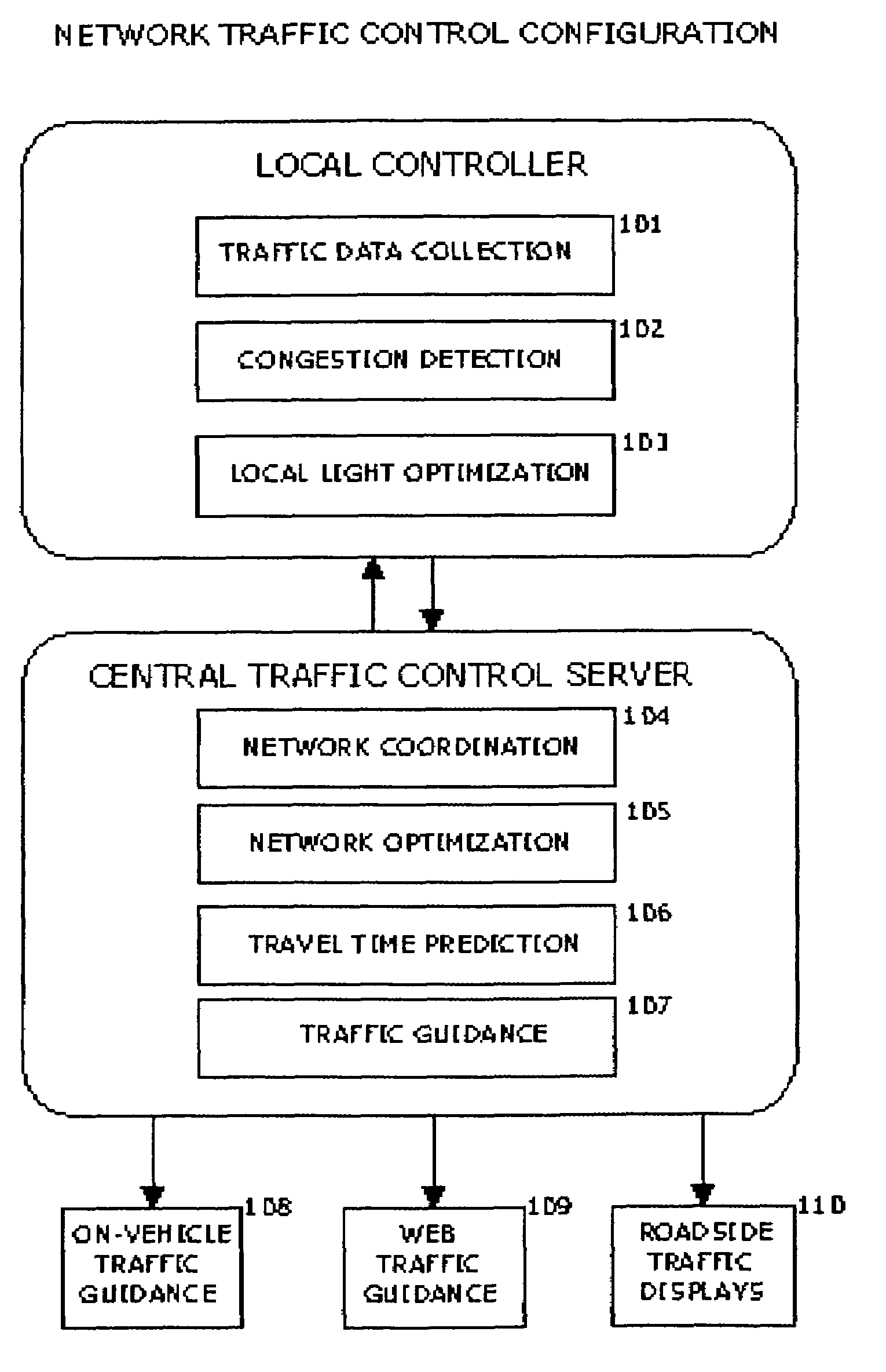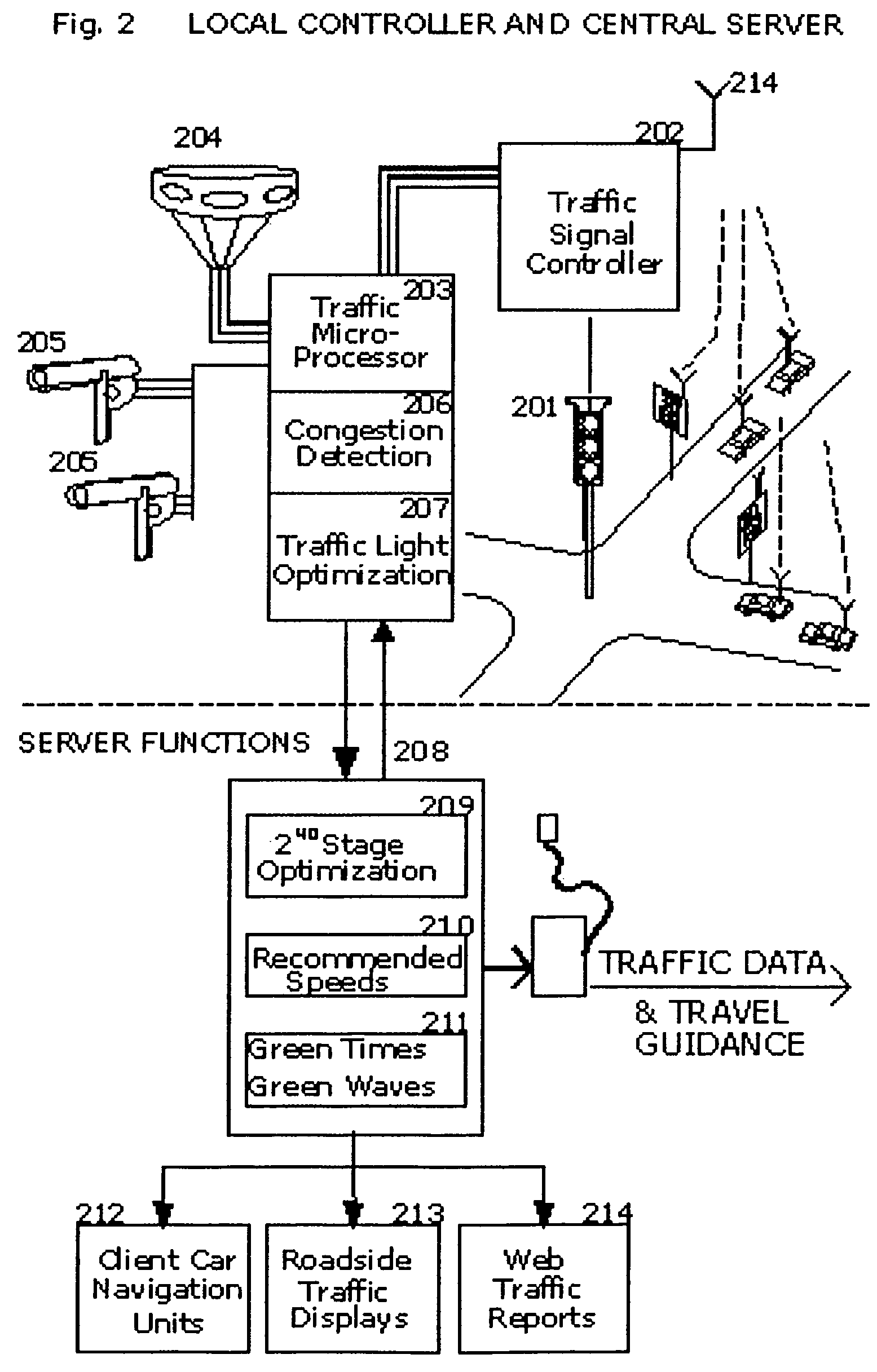Multi-objective optimization for real time traffic light control and navigation systems for urban saturated networks
a real-time traffic light and navigation system technology, applied in traffic control systems, traffic detection, instruments, etc., can solve the problems of severe under-performance of traffic congestion networks, single traffic control system or timing plan, whether fixed or regulated, and the need for light plans that are expensive to prepare and keep up. achieve the effect of reducing traffic congestion loads
- Summary
- Abstract
- Description
- Claims
- Application Information
AI Technical Summary
Benefits of technology
Problems solved by technology
Method used
Image
Examples
Embodiment Construction
System Components
[0058]FIG. 1 shows main system components of the proposed invention describing local and network traffic control configurations including:
Local controller functions:
[0059]Traffic data collection (101)[0060]Congestion detection (102)[0061]Local 1st stage optimization functions (103)
Central server functions:[0062]Green wave coordination (104)[0063]2nd stage network optimization (105)[0064]Recommended Travel Time Prediction (106)[0065]Traffic Guidance (107)[0066]On-vehicle traffic guidance (108)[0067]Web on-line traffic guidance (109)[0068]Roadside traffic advisory displays (110)
Local Controller and Central Server:
[0069]FIG. 2 shows a block diagram of various components of the proposed multiobjective system and a method for controlling of at least one local traffic light (201). Traffic light (TL) at an intersection (201) is connected to traffic signal controller (202) for controlling traffic light program. Local microprocessor (203) has a logical connection to the traf...
PUM
 Login to View More
Login to View More Abstract
Description
Claims
Application Information
 Login to View More
Login to View More - R&D
- Intellectual Property
- Life Sciences
- Materials
- Tech Scout
- Unparalleled Data Quality
- Higher Quality Content
- 60% Fewer Hallucinations
Browse by: Latest US Patents, China's latest patents, Technical Efficacy Thesaurus, Application Domain, Technology Topic, Popular Technical Reports.
© 2025 PatSnap. All rights reserved.Legal|Privacy policy|Modern Slavery Act Transparency Statement|Sitemap|About US| Contact US: help@patsnap.com



